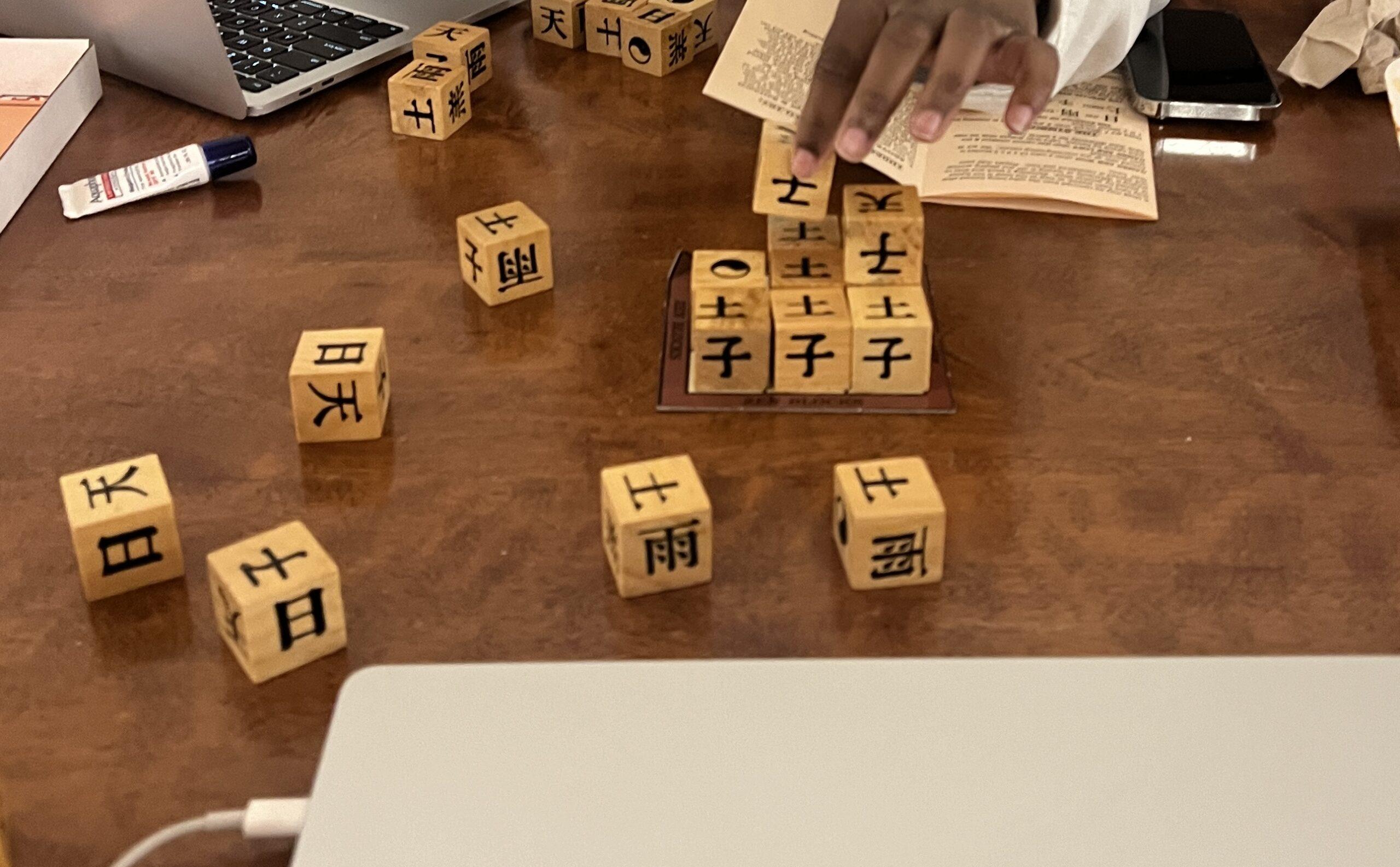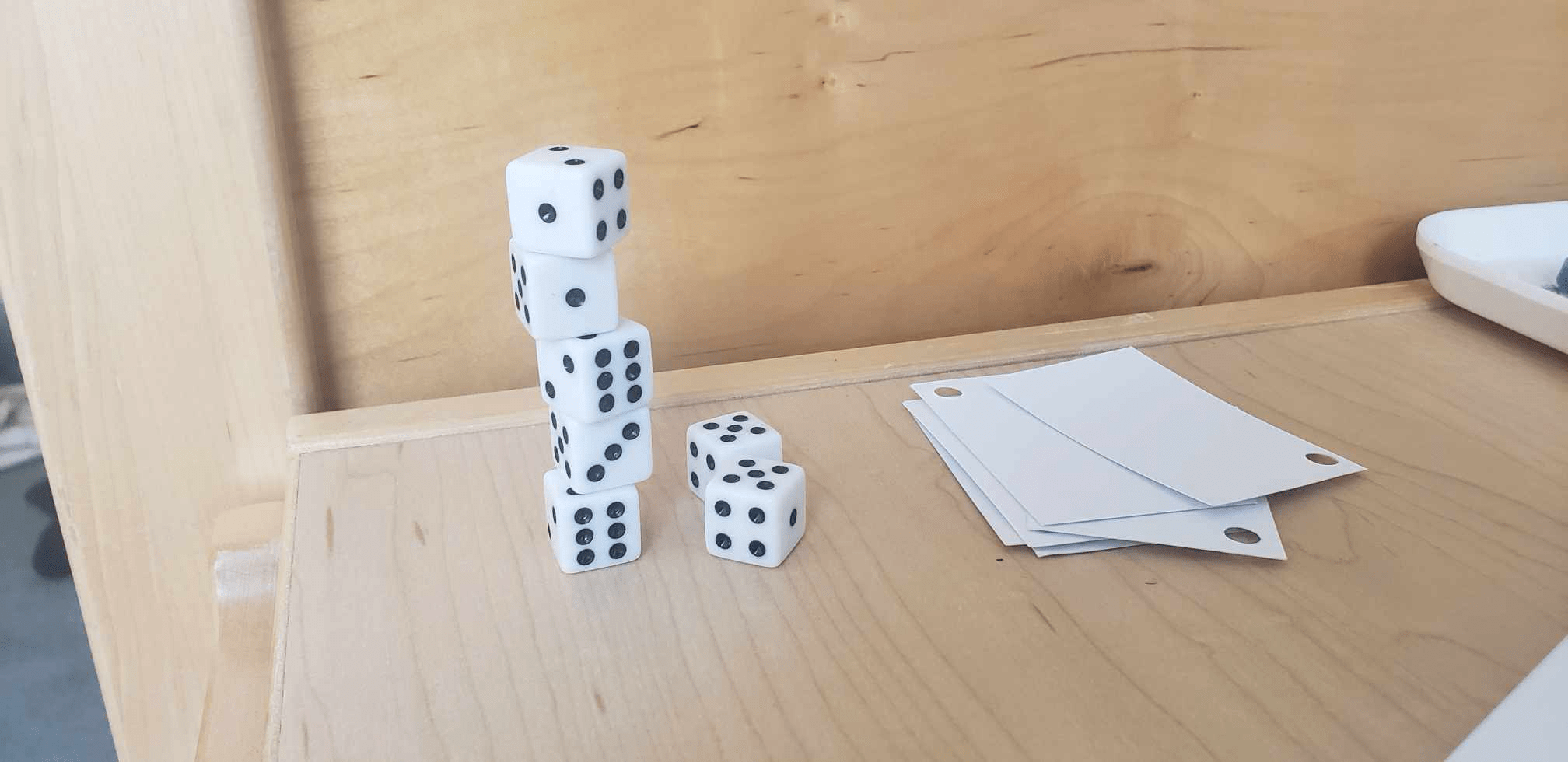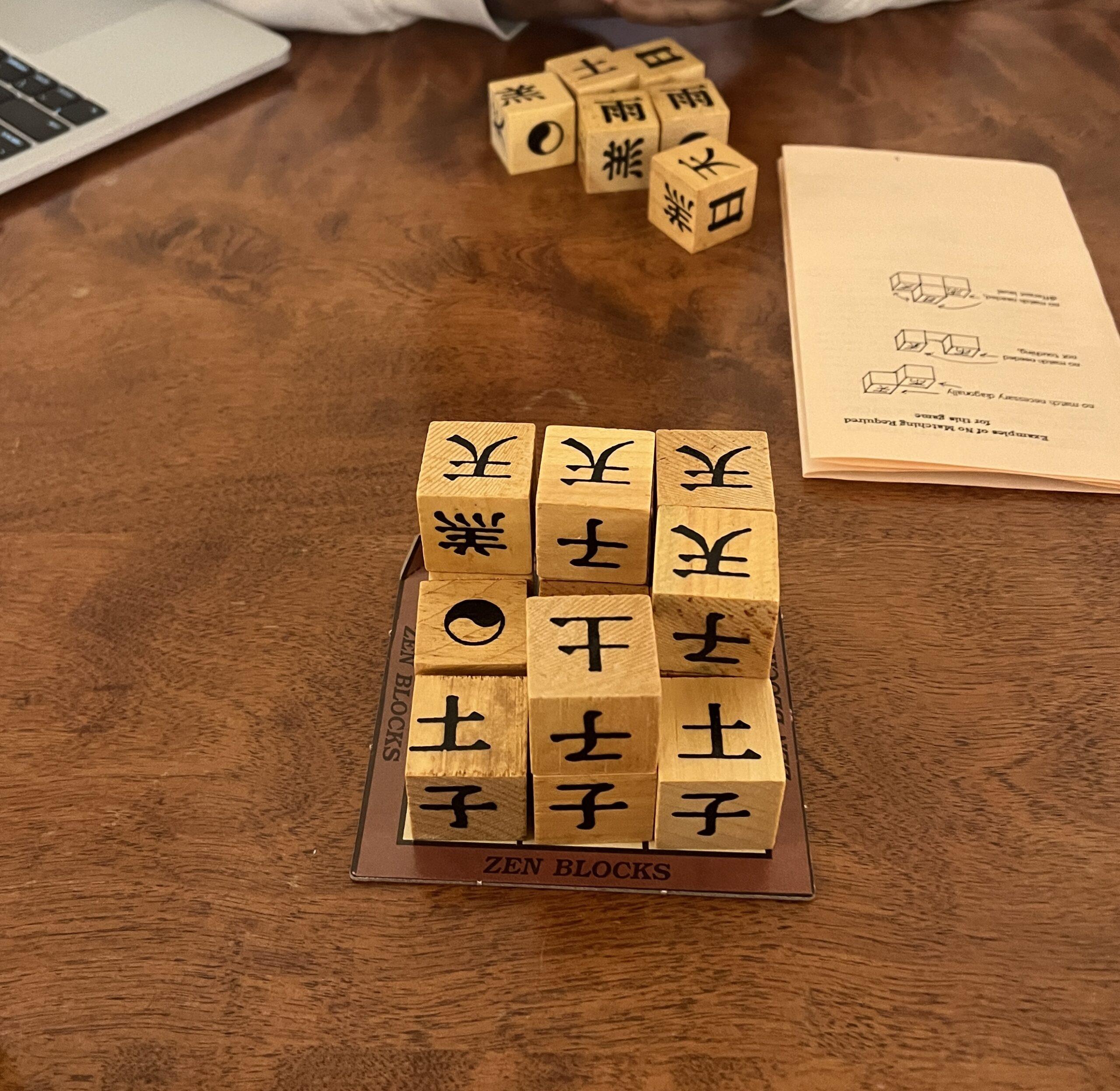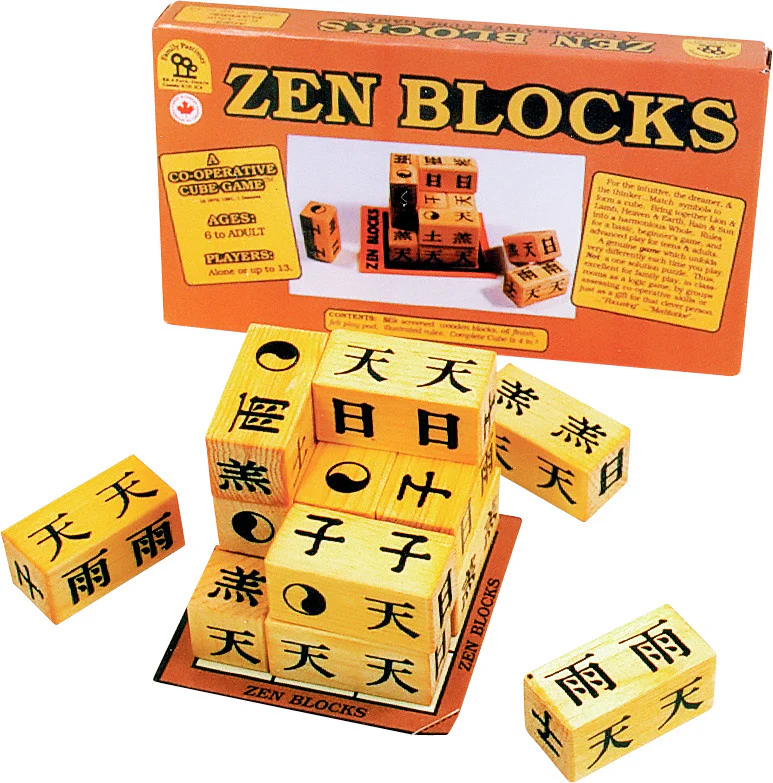Zen Blocks is a 1972 puzzle game created by Jim Deacove and published by Family Pastimes. It’s a logic and cooperative game for 1–13 players that takes about 30 minutes to play and is suitable for ages 6 and up. As far as I know, the game only exists in a physical version, which I explored in this critical play and took images from.
Zen Blocks focuses on both logic and cooperative play by requiring players to work together to create a 3x3x3 cube on the playboard using 1x1x1 blocks. Players place or alter blocks on a turn-by-turn basis. The catch is that each block has special faces on their sides, which creates limitations on how they can be arranged. Based on the version played, the limitations on how the blocks can be arranged affects the difficulty.

Our game, on the other hand, is a social deduction game that requires a saboteur to attempt to destroy a Jenga-style building and the rest of the players to maintain the building while guessing who the saboteur is. Non-saboteur players win if they remove a certain number of blocks or catch the saboteur. The saboteur is unknown, and there are various cards that are drawn, affecting the moves a player can make or constraining the game environment. It’s meant for 3 or more players, takes about 15 minutes to play, and is suitable for ages 13 and up.

Argument: While Zen Blocks mimics some of the strategy and building components of our game, its lack of physical dexterity, social deduction, and competition differentiates it. Both games require strategies related to a tower structure, but Zen Blocks requires purely construction while our game incorporates maintaining or destroying the structure. Our game also requires physical dexterity since players have to be careful and intentional in their moves that affect the structure’s stability. It also forces players to pay close attention to others’ moves, reactions, and behaviors to deduce their role. However, the largest difference by far is how the overarching core of the games differs: competition versus cooperation.
The mechanics of Zen Blocks emphasizes cooperation by requiring players to strategize on the placement of each block based on the given limitations. This creates an interesting dynamic where players need to discuss their next moves and plan ahead with each other to reach their goal. It adds to the aesthetic of the game by creating a loud and fellowship-based environment where players are constantly discussing which arrangement is the best, essentially agreeing or conceding to different strategies. This is captured by a quote by one of my play test peers: “So you have four blocks with that character face, and I only have two. Why don’t I finish off [the first layer] of the cube, and you focus on building the second layer. We don’t have many moves left so we need to make sure we don’t waste any.”
Our game functions in some similar ways when it comes to cooperation. Non-saboteur players need to find the best strategy to keep the tower standing, whether it’s working amongst each other or yourself to plan the moves in the best way possible. However, in this sense, I would argue that Zen Blocks has more direct player-to-player interactions because you must cooperate to have a chance to win. If you ignore the suggestions of other players, you will lose since the win condition depends on everyone’s blocks. In our game, as long as you’re motivated to keep the structure standing, you could realistically make independent moves while diverting suspicion without listening to others. In fact, you might find it easier to go solo because you can’t trust anyone.
On the other hand, the introduction of a saboteur sets up the basis for deception and deduction through competition, compelling players to scrutinize each other’s moves. Now, people have to work around the mysterious strategies of the saboteur, adapting accordingly while paying close attention to everyone’s moves before the structure falls. In fact, this incentivizes players to be hesitant about working together or listening to others’ advice. In Zen Blocks, no one has to worry about nefarious actions.

Another factor that differs the games is the random card actions that must be drawn, introducing elements of surprise and uncertainty in our game. No plan is perfect because any card can be played, altering the standing of the structure. The randomness of this mechanic leads to dynamics of plausible deniability, since many of the cards work in favor of the saboteur. This leads to constantly adapting strategies that differ round-to-round, while Zen Blocks players can realistically plan from the very beginning to meet the game’s requirements; it has to be a lot more structured because any implementation of randomness could end the game in one simple move. Thus, Zen Blocks has a more structured play style focused on logic and intuition from the start while our game is more randomized.
While Zen Blocks requires simple placing of blocks, our game introduces a critical mechanic—physical dexterity. This introduces uncertainty and plausible deniability because players can attribute suspicious moves to a lack of motor skills, or if you’re a saboteur, use it to your advantage.
There’s a few lessons I learned from playing Zen Blocks and our game. First, Zen Blocks doesn’t do a good job of keeping all players in the magic circle. If someone runs out of moves or finishes too early, they can’t participate in the game other than talk about strategies with other players. In our game, we aimed to ensure that everyone would stay in until the game ended. I also realize that Zen Blocks does a better job of staying consistent between games, since our game might incorporate too many elements of randomness with the card decks, saboteur role, and physical dexterity. This might lead to a less fun experience because players aren’t fully in control. Additionally, these three factors might give too much leeway and make it easier for the saboteur to win.




